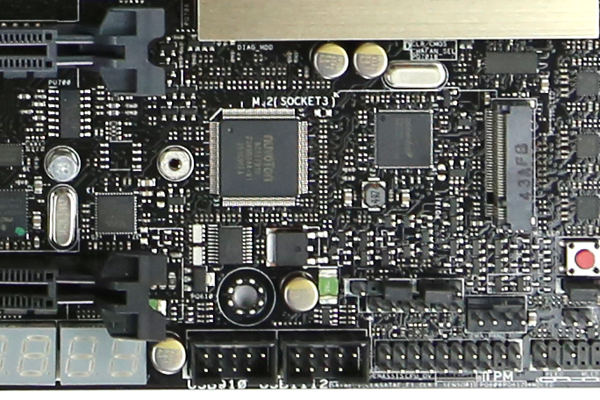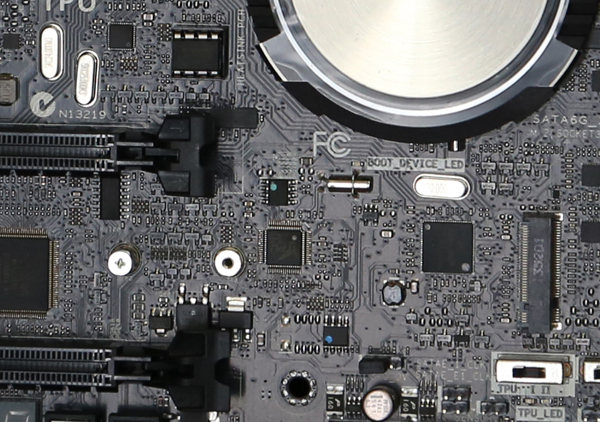In the next month to month and a half, workstation drive interfaces are going to change significantly. Whereas the 7-pin SATA connector has been a mainstay for about a decade going through three major revisions in that time, desktop motherboards are about to change significantly. Today we are going to take a quick look at the drive connectors that are going to become more common over the next two months: the SATA Express Host Connector and the M.2 NGFF connector.
SATA Express Host Connector
The SATA Express connector (currently) supports some old and some new looking features. For a comparison, here is a shot of an upcoming motherboard with both SATA Express host plug (left) and standard SATA (right) ports. One can see that the host plug has two layers of connector blocks, a top and bottom one. The middle and right blocks on the SATA Express host connector have what are basically backward compatible 7-pin SATA connectors. As one might imagine, these are going to make for very large cables.

There have been many details leaked about the upcoming ASUS Hyper Express 2.5″ product. The Hyper Express can take either mSATA or NGFF drives and turn them into a SATA Express drive. ASUS did tell journalists that the cables make a big difference as does the support of SRIS clock gen. This is because the PCIe signals need to pass via cable instead of an expansion slot. We still have not been able to test other solutions yet but this should give a good idea regarding what is coming.

For those wondering, the second cable hanging out of the drive enclosure is the power cable. Overall, the volume of cabling almost exceeds that of the 2.5″ device it is attaching. At some point, this ridiculous cabling will get streamlined much like we saw thick SCSI and IDE cables move to small SATA cables and big Parallel and USB ports become tiny enough for phones.
NGFF M.2 Connectors
On the other side of this, are the NGFF M.2 connectors that have become popular in ultrabooks and laptops lately. Many of the upcoming Haswell refresh motherboards that will support SATA Express will also support onboard NGFF M.2 SATA Express drive holders. This makes sense as it does away with the large cables. One major topic will be important in the M.2 world: drive size. As one can see, this unannounced motherboard that can be found on eTailer websites and the STH lab has standoffs for two different sized M.2 SSDs.

Here is another not-yet announced but spied motherboard with a NGFF M.2 connector. Apologies for the poor lighting, this one was in a not too brightly lit press room.

One can again see two standoffs for different size drives.
The bottom line here is that we are headed to a new interface that offers much more bandwidth. That is exciting on one hand as we will see new drives come out over the next few months. There is a very good chance we will see many of these drives encapsulate M.2 drives into larger form factors. When we posted the deal on the Seagate 600 Pro recently we did note that these interfaces are coming. At the same time, SATA III drives will be backwards compatible for the time being and there is a huge infrastructure in place for 2.5″ drives currently so that standard will not disappear overnight. This does highlight how much wasted space we had with 2.5″ SSDs where thin PCBs were mounted in a form factor designed for rotating disks. On the other hand, the interfaces are now moving away from the form factors employed by rotating media meaning the newest series of motherboards are slowly moving away from rotating media form factors. This is going to have a major impact on consumer desktop design. The upcoming batch of motherboards will have the initial support for SATA Express but expect we will see more on this front in the near future.
One may also notices that there have been very few SSD announcements in the past six months. With Computex in about a month it is quite possible that we will see drives released supporting the new standard.




